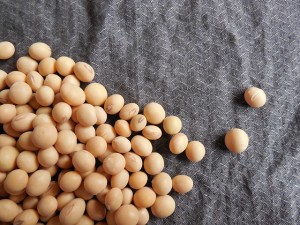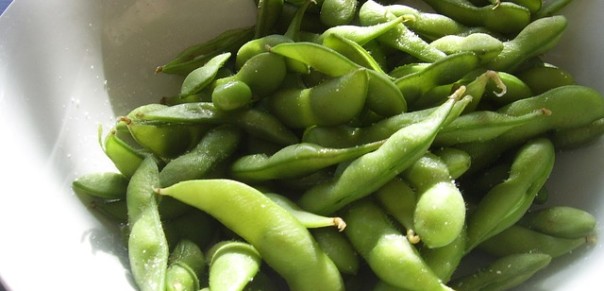Soy has exploded in popularity over the last fifteen years or so. Although soy is often built up to be a powerful super food, in reality it does not live up to the media and marketing hype.
Contrary to popular belief, soy really hasn’t been a staple of the human diet for all that long. It is a very tough plant that was long-thought to be inedible and traditionally was only consumed in fermented forms such as miso, tempeh, natto and Nama Shoyu in condiment-sized portions. Raw, unfermented and highly processed soy is extremely difficult to digest and quite inflammatory. Furthermore it contains phytic acid, an “anti-nutrient” that inhibits absorption of a variety of essential minerals and acts as a goitrogen interfering with thyroid function.
Soy is also high in isoflavones, a natural type of plant estrogen that can increase estrogen levels in humans. This is a bad thing as it acts as an endocrine disruptor in people of all ages leading to increased risk of feminization, precocious puberty, weight gain and estrogen dominant cancers and diseases.
Modern soy is one of the most heavily sprayed crops on the planet and is almost always genetically modified. In fact, as soon as GM soy hit the mass processed food market in the hidden in processed foods around 1997 severe peanut allergies in children jumped 200% in five years. A recent study demonstrated that pigs fed a diet of genetically modified soy and maize had an average of 25% heavier uterine weight and were 2.6 times more likely to have severe stomach inflammation than pigs not fed genetically altered foods. These pigs- both female and male- were also found to have reduced fertility.

Image: Pixabay
Processed soy is labelled as soy protein, soy protein isolate, defatted soy flour, soy lecithin and soy oil, in a variety of dairy substitutes and meat analogues, luncheon meats, tofu, soy sauce/tamari, condiments, packaged. restaurant and premade meals, side dishes, soups and snacks, baked goods, crackers, protein supplements and meal replacements, baby formula and desserts. It is almost always the rule that soy will be hidden somewhere in nearly every processed food on the market. The only way to really avoid it is to avoid processed and convenience foods and choose with fresh whole foods instead.
If one tolerates some soy, stick with occasional condiment-sized servings of 100% certified organic and non-GMO products that are traditionally fermented such as miso, natto, tempeh, tamari and Nama Shoyu. Avoid all processed soy products completely.
Do you eat soy? Why or why not? Share with us in the comments below and on Facebook and Twitter!
—
Love what you are reading? Stay in the loop and never miss a recipe; get the FREE Nutritionista ezine for free expert tips, success strategies and delicious healthy recipes and get Erin’s exclusive guide of the Top Ten Foods to Banish From Your Kitchen ($24.99 value) absolutely free! Get ready to nourish yourself sexy!
© 2013 Nutritionista. Erin Luyendyk, RHN. All rights reserved.
All material found on www.thenutritionista.ca is intended as general educational material only and should not be considered medical or nutritional advice. It is not intended to diagnose, treat, or cure any medical condition and has not been evaluated by the FDA. Please consult with your personal physician before implementing any health, nutrition, supplement or exercise program to ensure its safety and suitability for your specific individual situation


